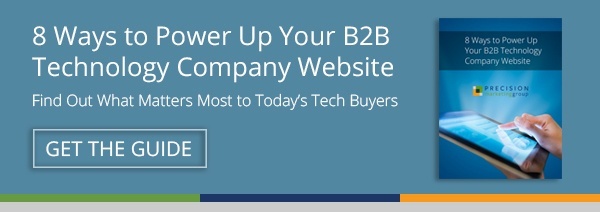Account-Based Marketing is just that, marketing that targets your chosen high-value accounts (as opposed to buyer personas). I love it because ABM’s goal is so precise—to attract X specific companies. You should love it because of these stats:
- 80% of marketers measuring ROI say that ABM outperforms other marketing investments. (ITSMA)
- 84% of marketers said that ABM had significant benefits to retaining and expanding existing client relationships. (Alterra Group)
- When ABM has been in use for at least a year, 60% of users reported a revenue increase of at least 10%, and 19% reported a revenue impact of 30% or greater. (Demandbase in eWeek)
What's more, there’s a huge advantage to knowing which companies you’re targeting—all their information is readily available online. This takes prospect research to a whole new level, helping you to better understand your audience and more easily persuade them to love your SaaS.
So how do you get started? Glad you asked.
Pull Together a List of Target Accounts
Start by determining the companies that have the same most important attributes as your best customers. You might already have employees from these companies in your database. Maybe you’ve been sending them your quarterly newsletter or an occasional email. Now you can prioritize them based on specific criteria.
For example, if your best customers are all mid-sized companies in a specific industry, search for similar companies in your database. When you’ve exhausted your database, it’s time to start digging on the internet. Use Google, LinkedIn and similar platforms to build your list. While you’re gathering company information, don’t forget to also collect key decision maker information (all of them). You’ll thank me later.
Segment Those Accounts
Now that you've built up your list, it’s time to break it down. Maybe your list of 100 companies can be further sliced by industry, size, geography, etc. What’s important is that you have groups that can be communicated to with a similar message per segment. For example, if you have a list of 100 vehicle manufacturers, you might want to communicate differently to the commercial vehicle manufacturers than you would to the personal auto vehicle manufacturers.
Get to Know Each Segment
Here’s where your buyer personas still come in handy. Take the time to learn about the companies and the key decision makers you are trying to persuade. Who is involved in the technology or SaaS buying process? Ask your sales team, do online research, and, if they're available for interviews, ask your current customers. This will be vital to determining the types of marketing programs needed to most effectively reach them.
Customize a Marketing Plan & Launch!
It helps to start with your buyer’s journey. What does the key decision maker need at each stage to move smoothly to the Decision Stage? Better yet, what do they want at each stage?
Of course, the tactics you use to appeal to them can include outbound and inbound efforts. A combination of the two generally works best since the B2B sales cycle is generally longer and can require an arsenal of nurturing techniques in order to be effective. Here’s a simple example.
Our goal: Nurture 50 small manufacturing companies in the Northeast to a sale.
Outbound Tactics
- Send direct mail content that has a link to a custom landing page
- Set up paid ad campaigns that target the specific companies and lead them to a custom landing page, where we can collect their information for nurturing
- Implement retargeting campaigns so that website visitors keep us top of mind as they continue to see our ads throughout the web
Inbound Tactics
- Set up smart content on our website that shows customized content depending on the visitor’s lifecycle stage
- Implement an email nurturing track that leads contacts through Awareness, Consideration and Decision Stage content like custom blogs, videos, eBooks, and software demos
The key is that you use your research to create great customized content for your desired accounts. As always, optimize your work based on your results and pass any insights about the companies to your sales team. After all, the goal is to get the desired company to raise their hand to a conversation. If your sales team is well-prepared for the call in advance, your chances of making a sale multiply! If you use HubSpot, here’s more on how to automate that process.




